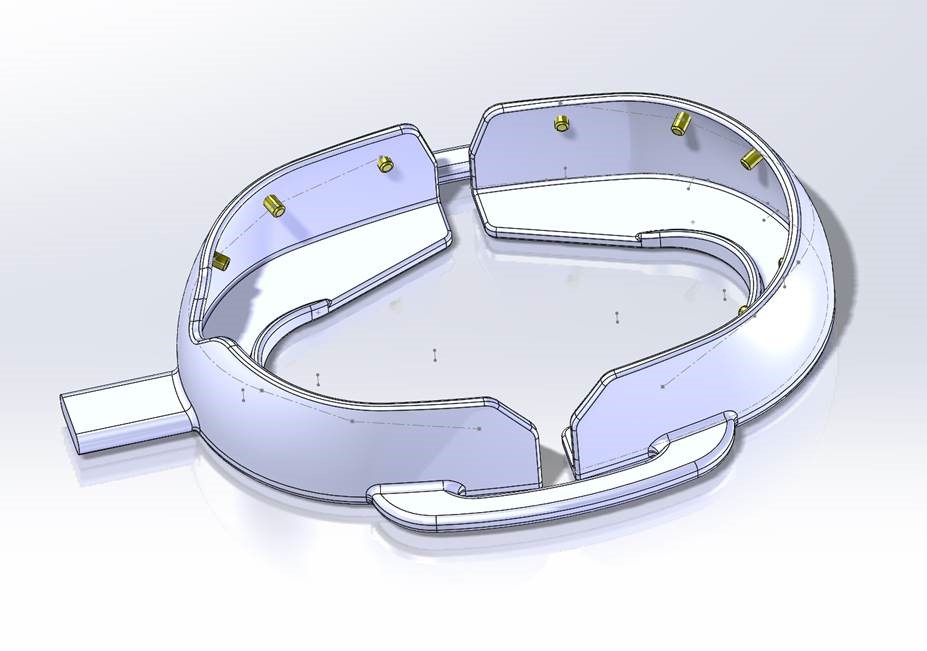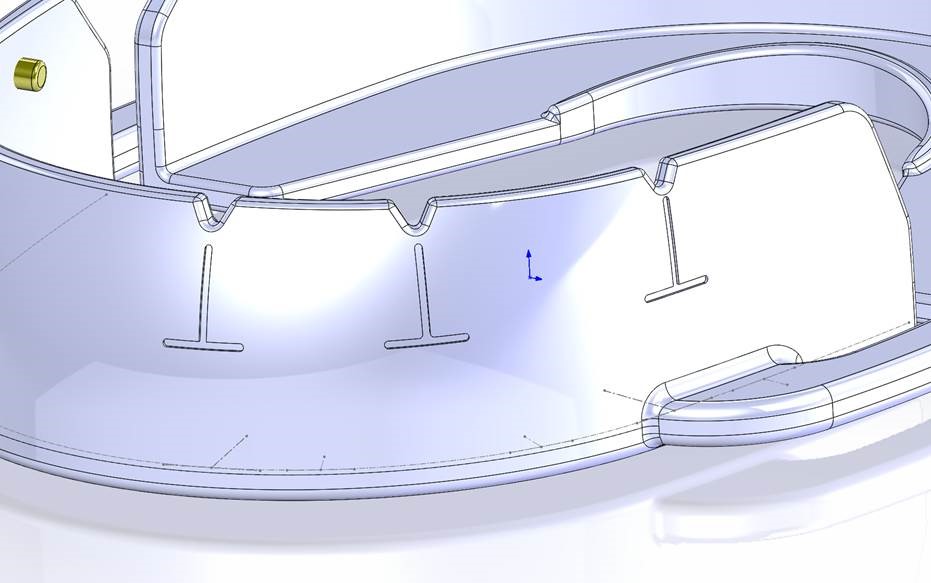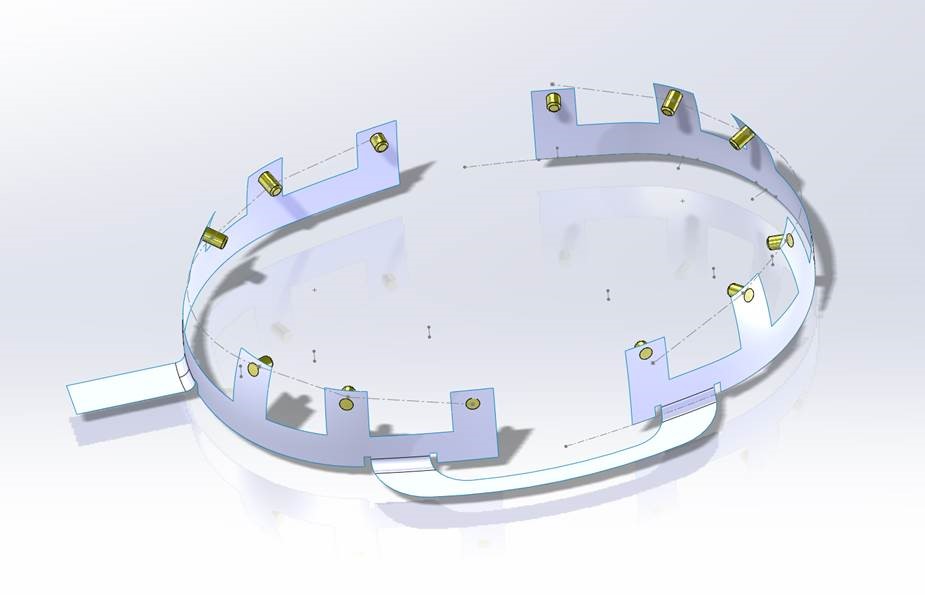Related Articles
Electrical stimulation enhances tissue reorganization during orthodontic tooth movement in rats
The rate and the type of orthodontic tooth movement is influenced by bone turnover in a rat model
The effects of electrical current from a micro-electrical device on tooth movement
Korean J Orthod. 2008 Oct;38(5):337-346. Korean.
Published online October 30, 2008. https://doi.org/10.4041/kjod.2008.38.5.337
Copyright © 2008 Korean Association of Orthodontists
The effects of electrical current from a micro-electrical device on tooth movement
Dong-Hwan Kim, DDS, MSD,a Young-Guk Park, DDS, MSD, PhD,b and Seung-Gu Kang, DDS, MSD, PhDc
aPrivate practice.
bProfessor, Department of Orthodontics, School of Dental Medicine, Kyung Hee University, Korea.
cAssistant Professor, Department of Orthodontics, School of Dental Medicine, Kyung Hee University, Korea.
Corresponding author: Young-Guk Park. Department of Orthodontics, School of Dental Medicine, Kyung-Hee University, 1, Hoegi-dong, Dongdaemun-gu, Seoul 130-702, Korea. +82 2 958 9310; Email: ygpark@khu.ac.kr
Received September 01, 2006; Revised May 30, 2008; Accepted June 03, 2008.
This article has been cited by 8 articles in
This article has been cited by 2 articles in KoMCI.
This article has been cited by Google Scholar.
Go to:
Abstract
Objective
The purpose of this study was to determine whether an exogenous electric current to the alveolar bone surrounding a tooth being orthodontically treated can enhance tooth movement in human and to verify the effect of electric currents on tooth movement in a clinical aspect.
Methods
This study was performed on 7 female orthodontic patients. The electric appliance was set in the maxilla to provide a direct electric current of 20 µA. The maxillary canine on one side was assigned as the experimental side, and the other as control. The experimental canine was provided with orthodontic force and electric current. The control side was given orthodontic force only. Electrical current was applied to experimental canines for 5 hours a day. The amount of canine movement was measured with an electronic caliper every week.
Results
The amount of orthodontic tooth movement in the experimental side during 4 weeks was greater by 30% compared to that of the control side. The amount of increase in tooth movement in the experimental side was statistically significant. The amount of tooth movement in the experimental side during the first two weeks was greater than that in the following two weeks. The amount of weekly tooth movement in the control side was decreased gradually.
Conclusions
These results suggested that the exogenous electric current from the miniature electric device might accelerate orthodontic tooth movement by one third and have the potential to reduce orthodontic treatment duration.
Keywords: Electric appliance; Tooth movement; Canine retraction
Electrical stimulation enhances tissue reorganization during orthodontic tooth movement in rats
Original Article
- First Online:
- 26 February 2016
- 1Citations
- 224Downloads
Abstract
Objective
This study evaluated the effects of a low-intensity electric current on tissue reorganization during experimental orthodontic tooth movement.
Materials and methods
Thirty-two animals were divided into two groups evaluated on days 3 and 7: OTM—orthodontic tooth movement and OTM + MC—orthodontic tooth movement and microcurrent application (10 μA/5 min). The samples were processed for histological, morphometric, and Western blotting analysis.
Results
Analysis of the periodontal ligament (PL) showed a significantly smaller number of granulocytes in the OTM + MC group on day 7.The number of fibroblasts was significantly higher in the OTM + MC group on days 3 and 7. The area of birefringent collagen fibers was more organized in the OTM + MC group on days 3 and 7. The number of blood vessels was significantly higher in the OTM + MC group on day 7. Microcurrent application significantly increased the number of osteoclasts in the compression region of the PL. In the OTM + MC group on day 7 of tooth movement, the expression of TGF-β1 and VEGF was significantly reduced whereas the expression of bFGF was increased in PL.
Conclusions
Electrical stimulation enhances tissue responses, reducing the number of granulocytes and increasing the number of fibroblasts, blood vessels, and osteoclasts and modulates the expression of TGF-β1, VEFG, and bFGF.
Clinical relevance
This technique is used in many areas of medicine, but poorly explored in dentistry and orthodontics. This treatment is cheap and non-invasive and can be applied by own orthodontist, and it can improve the treatment with a faster and safe tooth movement, without pain.
Effect RANKL Produced by Periodontal Ligament Cells on Orthodontic Tooth Movement
http://repository.upenn.edu/cgi/viewcontent.cgi?article=1015&context=dental_theses
Local delivery of recombinant osteoprotegerin enhances postorthodontic tooth stability.
Local delivery of recombinant osteoprotegerin enhances postorthodontic tooth stability.
Clinical Study Korea Results
The effect of pulsed electromagnetic fields on the acceleration of tooth movement.
The effect of pulsed electromagnetic fields on the acceleration of tooth movement.
Author information
- 1
- Department of Orthodontics, Shahid Beheshti University, Tehran, Iran.
Abstract
AIM:
METHODS:
RESULTS:
CONCLUSION: THESE FINDINGS SUGGEST THAT APPLICATION OF A PEMF CAN ACCELERATE ORTHODONTIC TOOTH MOVEMENT.
RANKL expressed by osteocytes has an important role in orthodontic tooth movement -- ScienceDaily
Misc Related Articles
Recombinant osteoprotegerin effects during orthodontic movement in a rat model – Click Here
Local Delivery of Recombinant Osteoprotegerin Enhances Postorthodontic Tooth Stability – Download
A comparative study of the bone regenerative effect of chemically modified RNA encoding BMP-2 or BMP-9 – Click Here
Local injection of RANKL facilitates tooth movement and alveolar bone …
Bioelectric Perturbations in Orthodontic tooth movement
ssdctumkur.org/…/Bioelectric%20Perturbations%20in%20Orthodontic%20tooth%20m…
Bioelectric Perturbations in Orthodontic tooth movement. Volume 1 Issue 1. 42 Journal of DentalSciences and Research. INTRODUCTION. The essence of orthodontic treatment is the movement of teeth through alveolar bone to obtain a more perfect dental occlusion, and is the classic paradigm for mechanical stresses …
Bioelectric Perturbations of Bone – The Angle Orthodontist
Jan 1, 1984 – Bioelectric Perturbations of Bone. Research Directions and Clinical Applications. L. A. NORTON, K. J. HANLEY AND J. TURKEWXCZ. Dr. Norton is Professor of Ortho- dontics at the University of Connecti- cut School of Dental Medicine. He holds an AB. degree in chemistry from Bowdoin College, Brunswick …
BIOLOGY OF TOOTH MOVEMENT – SlideShare
Jun 18, 2012 – Two major theories are: The bioelectric theory The pressure-tension theory; 22. The bioelectric theory relates tooth movement at least in part to changes in bone metabolism controlled by the electric signals that are produced when alveolar bone flexes and bends. This bending and flexing generates electric ..
The Biology of tooth movement (Orthodontics) – SlideShare
Dec 7, 2016 – THEORIES OF ORTHODONTIC TOOTH MOVEMENT 1)PRESSURE TENSION THEORY ( Relates tooth movement to cellular changes produced by chemical messengers, tradionally thought to be generated by alterations in blood flow through the PDL 2)BIOELECTRIC/BONE BENDING THEORY ( Relates …
Bioelectric Properties of the ToothJournal of Dental Research – H.F. …
journals.sagepub.com/doi/abs/10.1177/00220345690480053001
The normal, or resting, potential that exists between the enamel and soft tissues can be displaced in magnitude and sign by changes in solution concentration and pH. Such displaced potentials return to the resting range. Mouth breathing caused regular variation in the potential across an anterior tooth, which was ..
Accelerated Orthodontic Tooth Movement: A Review
India Clinical Study
Bone Generation Manuscript



